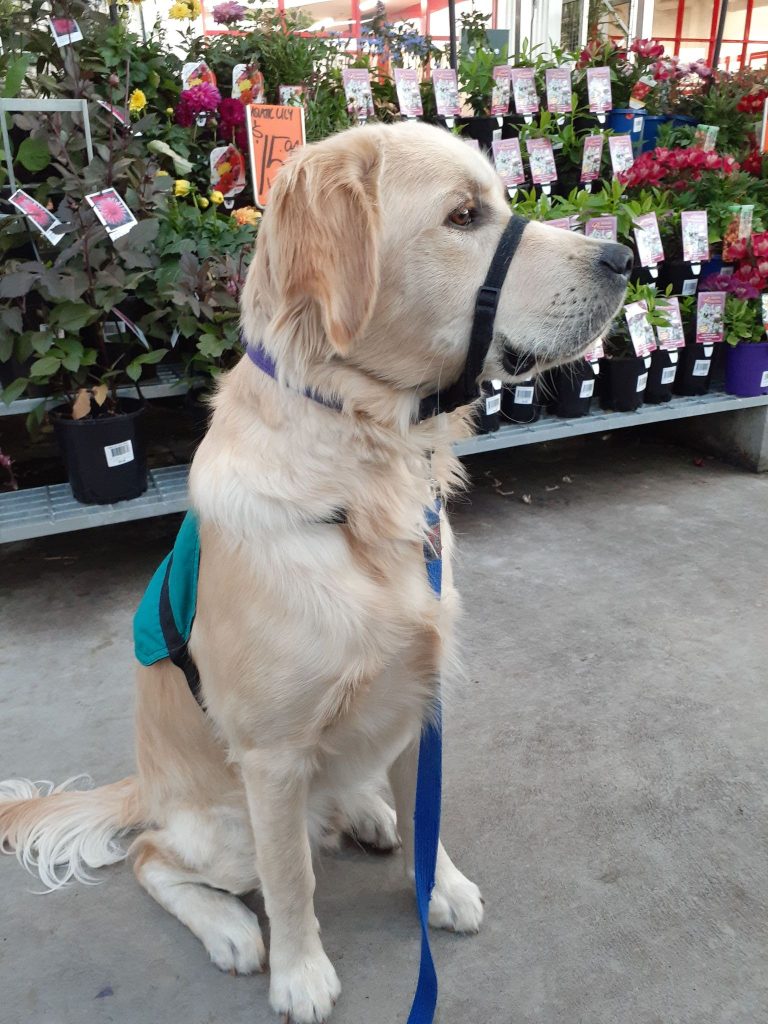
Public Access Training means teaching your dog to respond to obedience requests, and behave appropriately, in a variety of public settings, in order for the dog to work effectively as an Assistance Dog.
In addition, an Assistance Dog must also be able to perform specifically trained tasks to aid the handler with their disability.
Starting Public Access Training
All training is carried out in pet-friendly locations (Bunnings, pet stores, pet-friendly cafes, car parks, outside shops, or private places with permission) until the dog reaches the standard of training required under the Disability Discrimination Act. Once the dog is toileting on cue, behaving appropriately, and reliably performing at least one task to aid the handler, and the dog is covered under Third Party Liability insurance, then training in Public Access locations (shopping centres etc) can commence, under the supervision of a suitably experienced coach/trainer.
Preparation for the Public Access Test includes:
- Toilet on cue
- Load and unload safely from a vehicle, when cued
- Navigate a carpark safely and under control
- Enter a public building under control
- Not being a nuisance or hazard to the public
- Under control at all times, with a relaxed demeanour
- Show control around food distractions
- Settle under or near handlers chair
- Comfortably ignore adults and children
- Does not solicit attention
- Maintains control while another dog passes
- Calm when subjected to noise distractions
- Walk calmly at “Heel” without pulling on the lead
- Maintain a Sit and a Down when cued
- Recall to handler
- Clean and well groomed appearance
- Equipment in good order
Assessment of the dog-handler team
The Public Access Test is NOT simply an assessment of the dog’s level of training. It also tests the Handler’s ability to control and manage the dog in public, with requirements such as:
- Dog is well-managed by the handler
- Handler praises and rewards the dog
- Handler has control and dog is responsive to commands
- Assess overall social behaviour including how the handler reassures the dog, controls the leash or harness, without harshness or undue correction
- Observe the role played by the handler to physically control the dog